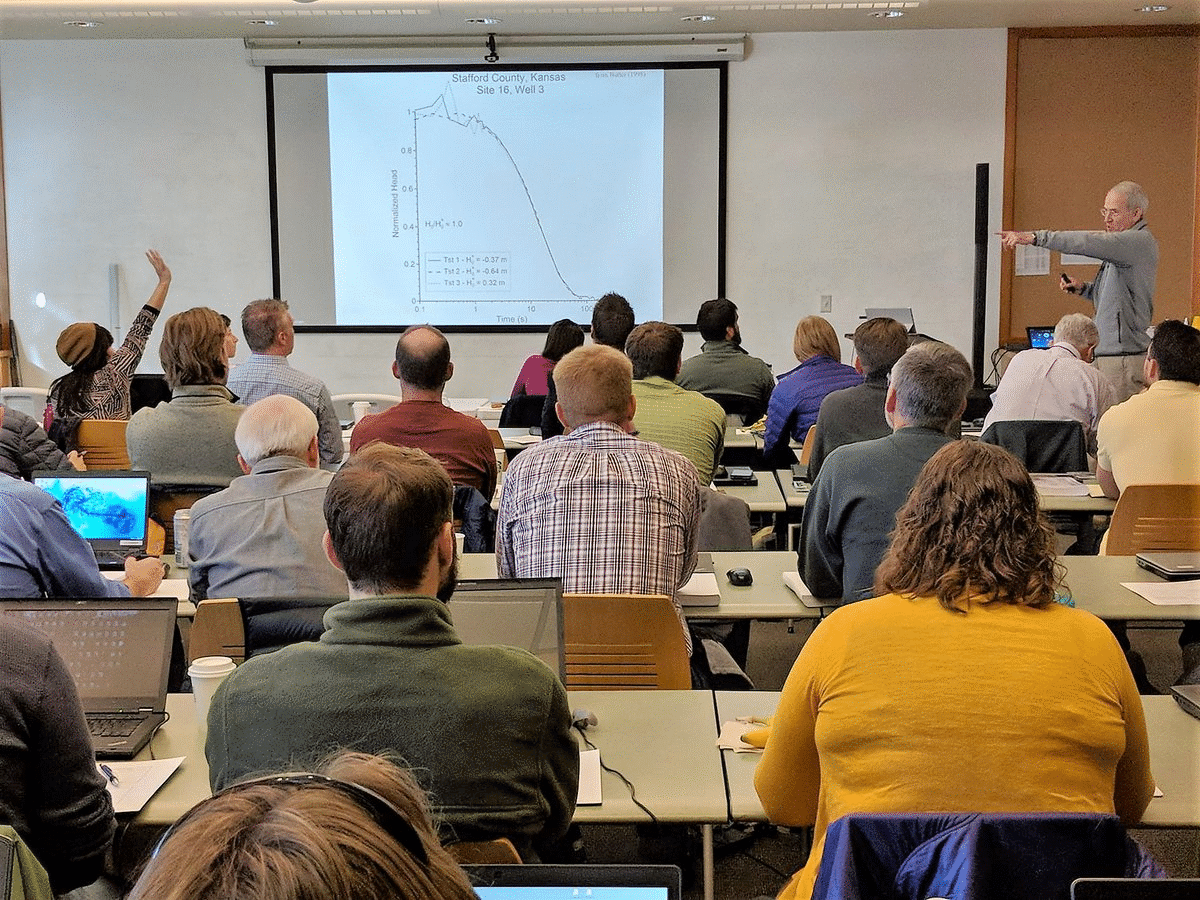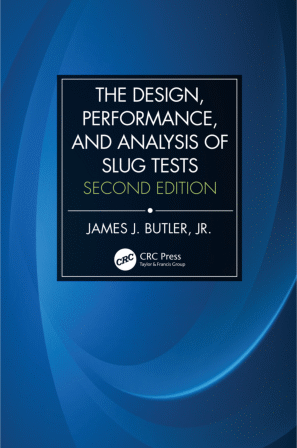Successful Slug Testing:
Formations of Low Hydraulic Conductivity, High, and Everything in Between
Despite the popularity and frequency of slug testing, obtaining reliable estimates of hydraulic conductivity can be difficult. Questions about test design, field practices, and analysis strategies continue to challenge professionals.
Sometimes these challenges emerge because of the conceptually simple nature of slug testing or lack of meaningful training. Many challenges can be easily overcome by learning the key steps that make slug testing more reliable - and easier to do with confidence.
EXTREME CONDITIONS in formations of very high and very low hydraulic conductivity can add another layer of confusion plus wreak havoc when field staff are not prepared with the appropriate field strategies.
Webinar participants will learn the key steps they need to get reliable information from slug tests. Plus they will learn the strategies for successful slug testing in formations with very high or low hydraulic conductivity - the bane of hydrogeologists.
 Much of the field and theoretical research on slug tests over the last 25 years has been done by Jim Butler and colleagues. Jim's work is widely recognized by the academic, consulting, and regulatory communities as having led to significant advances in the state of the practice for slug testing.
Much of the field and theoretical research on slug tests over the last 25 years has been done by Jim Butler and colleagues. Jim's work is widely recognized by the academic, consulting, and regulatory communities as having led to significant advances in the state of the practice for slug testing.
Jim Butler co-teaches the aquifer testing course (with Glenn Duffield) where he dedicates an entire course segment about slug testing in extreme conditions of high and low hydraulic conductivity. In this webinar Jim will present the key steps for successful slug testing for those extreme conditions and everything in between.
Whether you want to learn more about slug tests in general or tests in material of very high or low hydraulic conductivity, this webinar will provide information and insights that are not available elsewhere on the web.
THE SECOND EDITION IS HERE!

The Design, Performance, and Analysis of Slug Tests (2nd Edition)
by Jim Butler, PhD
The Design, Performance, and Analysis of Slug Tests, Second Edition explains virtually all there is to know regarding the design, performance, and analysis of the most common well test for determining hydraulic conductivity.
The first edition has become the standard reference for all aspects of slug tests. It has positively changed project outcomes and helped professionals become responsible stewards of our precious water resources by promoting best practices.
The Second Edition contains updated information and expands the focus with new developments where slug testing is applied in applications related to contaminant assessment.
New Features:
- Presents the eight key steps for conducting reliable slug tests.
- Describes new methods for the analysis of tests in unconfined aquifers and in highly permeable settings.
- Expands topical coverage of LNAPL baildown tests and slug tests in small diameter wells.
- Includes numerous flow charts that illustrate easy-to-use strategies for selection of analysis methods, and field examples demonstrate how each method should be used to get the most out of test data.
- Contains new straightforward practical guidelines that summarize the major points of each chapter.
Written for practicing groundwater consultants and engineers, The Design, Performance, and Analysis of Slug Tests, Second Edition enables readers to achieve more reliable information from slug tests and widen the application of this common field method.
HIDE
Here's what people are saying about Jim's past webinar:
"All the webinars that I ordered were excellent, taught by high quality instructors. Each one addressed some (important technical) gaps. I enjoyed the webinars on the 'Hydrogeology of Aquitards and Low Permeability Materials' and the webinar on 'Slug Testing for Site Characterization'. These are important hydrologic subjects that are not usually covered in school curricula. Aquitards are important part of every groundwater project when describing the flow of groundwater in aquifers or the movement of contaminants in groundwater."
- William Ford, Geohydrologist, Federal Agency
"By using real-world slug test data during the webinar, I was able to see right away how Jim Butler's guidelines improve the efficiency and confidence in hydraulic conductivity test results. The presentation's clear graphics and on-site examples made this a practical learning experience, and I will certainly be able to implement these ideas both in the field and in analysis."
- Rachel McLean, AMEC Earth & Environmental
Instructors Bio
Jim Butler, Ph.D.
 Jim Butler is the author of "The Design, Performance, and Analysis of Slug Tests" (Second Edition). He currently is a Senior Scientist in the Geohydrology Section of the Kansas Geological Survey at the University of Kansas, where he has worked for over 30 years.
Jim Butler is the author of "The Design, Performance, and Analysis of Slug Tests" (Second Edition). He currently is a Senior Scientist in the Geohydrology Section of the Kansas Geological Survey at the University of Kansas, where he has worked for over 30 years.
His research interests include aquifer testing, assessment of aquifers that support irrigated agriculture, high-resolution subsurface characterization, well responses to natural and anthropogenic stimuli, and the role of phreatophytes in stream-aquifer systems.
Jim holds a B.S. in Geology from the College of William and Mary, and a M.S. and Ph.D. in Applied Hydrogeology from Stanford University. Jim was the 2007 Darcy Distinguished Lecturer of the National Ground Water Association (NGWA), the 2009 Pioneers in Groundwater Award honoree by the American Society of Civil Engineers - Environmental and Water Resources Institute, and, most recently, the 2020 recipient of NGWA's M. King Hubbert Award.
Jim helps advance the environmental and engineering industry through teaching professionals about both slug testing and pumping tests. Jim has taught more than 40 courses with Midwest GeoSciences Group. This webinar is another step toward that advancement and we are grateful to have Jim Butler teach this purposeful and applied webinar.